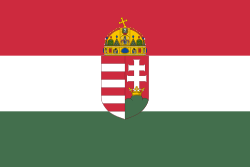| Hungary at the 1936 Winter Olympics | |
|---|---|
 | |
| IOC code | HUN |
| NOC | Hungarian Olympic Committee |
| Website | www |
| in Garmisch-Partenkirchen | |
| Competitors | 25 (22 men and 3 women) in 5 sports |
| Flag bearer | Levente Balatoni [1] |
| Medals Ranked 10th |
|
| Winter Olympics appearances (overview) | |
Hungary competed at the 1936 Winter Olympics in Garmisch-Partenkirchen, Germany.